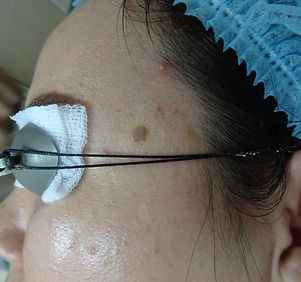
Acne Vulgaris
Acne is a common skin condition that occurs when hair follicles become clogged with oil and dead skin cells. It often results in whiteheads, blackheads, or pimples. It presents as pimples, cysts, nodules, whiteheads and blackheads. There are many factors contributing to acne, including hormonal changes, certain medications, diet, and stress.
Dermatitis
Dermatitis is a general term for inflammation of the skin. It includes various conditions such as contact dermatitis, seborrheic dermatitis, and atopic dermatitis. Symptoms include swelling, redness, and itchiness. Symptoms vary based on the type and severity of dermatitis. Dermatitis can be caused by allergic reactions, irritants like harsh soaps, genetic factors, and immune system dysfunction.


Eczema (Atopic Dermatitis)
Eczema is a chronic condition that makes the skin red, itchy, and inflamed. It often appears in childhood but can persist into adulthood. Common symptoms can include itchy, red, and dry skin. It can also present as patches of inflamed skin. It is usually caused by genetic factors, immune system response, environmental triggers like allergens, and stress.
Psoriasis
Psoriasis is an autoimmune disorder that causes skin cells to multiply up to ten times faster than normal, leading to bumpy red patches covered with white scales. It is characterised by red patches of skin covered with thick, silvery scales, dry or cracked skin that may bleed. It is generally influenced by genetic predisposition, immune system issues, triggers like infections, stress, and cold weather.
Rosacea
Rosacea is a chronic condition that causes redness and visible blood vessels in the face. It may also produce small, red, pus-filled bumps. Common symptoms of rosacea include redness in the face, visible blood vessels, swollen red bumps, eye problems. The exact causes are unknown, but factors including genetic predisposition, immune system overreaction, and environmental triggers can potentially increase the occurrence of rosacea.
Hives (Urticaria)
Hives are a skin reaction that causes itchy welts, which can be triggered by allergic reactions, stress, or infections. Common signs and symptoms include raised, itchy welts that are red or skin-coloured, varying in size. This can be caused by allergic reactions to foods, medications, insect stings, or other triggers, as well as stress and infections.
Fungal Infections
Fungal infections, such as athlete's foot, ringworm, and yeast infections, are caused by various types of fungi. Symptoms usually include itchy, red, and sometimes scaly skin, with specific symptoms varying based on the type of infection. It generally is caused by skin contact with fungal spores, often in warm, moist environments.
Vitiligo
Vitiligo is a condition where the skin loses pigment cells (melanocytes), leading to white patches on the skin. It presents as white patches on the skin, which may spread and grow over time. It is caused by an autoimmune destruction of melanocytes, genetic factors, and triggers like sunburn or stress.
Melasma
Melasma is a patchy dark brown or grayish discoloration of the skin on the face, such as the cheeks, nose, upper lip and forehead. These patches often develop gradually over time. It is caused when melanocytes (cells in the epidermal layer of the skin that produce a pigment called melanin) are stimulated by the female sex hormones estrogen and progesterone to produce more melanin pigments in response to the skin being exposed to the sun. Women with a light brown skin type who are subject to regular exposure to the sun are most susceptible to developing this condition. Genetic predisposition is also a major factor in determining whether someone will develop melasma.
Seborrheic keratosis
Seborrheic keratosis is a lesion on the skin. The lesions are caused by the cumulative effects of long-term exposure to ultra violet (UV) light. The condition often affects people who spend extended periods outdoors. While it is also common in the elderly, some ethnic groups may also be more susceptible to developing seborrheic keratosis at a young age.
Seborrheic dermatitis
Seborrheic dermatitis is considered as a chronic form of eczema. It appears on the body where there are a lot of oil-producing (sebaceous) glands like the upper back, nose and scalp. It can cause a variety of symptoms from dandruff to a rash on the affected area. Common triggers for seborrheic dermatitis include stress, alcohol intake, hormonal changes or illness, harsh detergents or soap and a change in the season.







